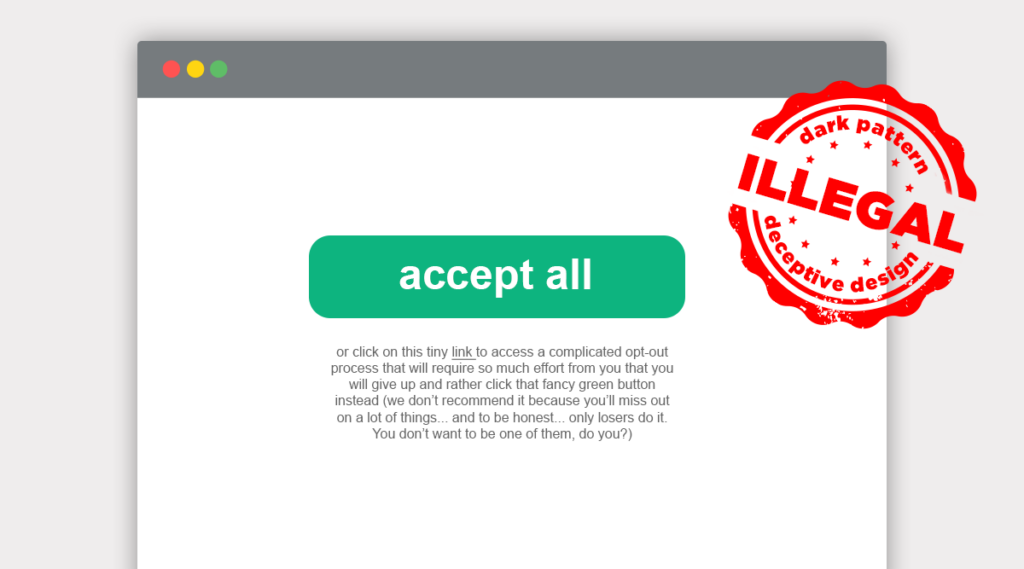European Union Ruled: Shady Design Practices Are Illegal
The EU has adopted a set of regulations that condemn misleading techniques such as dark patterns. In doing so, the EU sets new standards, catching digital businesses that over-focus on conversion funnels and possibly use deceptive design techniques red-handed. The user experience (UX) community that has been advocating for ethical design for years without getting a seat at the table can rejoice … and roll up its sleeves to get to work.

Consumers Will See The First Effect On Cookie Consent Forms
You can read on the EU press release highlighting the new standards that “the so-called dark patterns and misleading practices aimed at manipulating users’ choices will also be prohibited.” A direct application we can expect to see is a change in cookie consent prompts. We are all resigned to click on the “accept all” button because the opt-out options require too much effort. We all feel tricked when we think we opt-out from sharing personal data … but accidentally click that shiny button that does the opposite. And we often fail to remove consent because we can’t find how to. With the new regulations, this will change, and fast — the fines of up to 10% of any offender’s worldwide annual turnover for noncompliance are hefty.
Organizations Will Have To Adopt Ethical Design-Led Practices
The EU also requests more accountability and transparency from online platforms. To provide “clear information on content moderation or the use of algorithms for recommending content (so-called recommender systems)”, those platforms will need a design-led approach. It’s time for ethical design to take a stand, leading a much-needed collaboration between designers, data scientists, and developers. But those teams might discover that the work goes beyond copywriting to explain what algorithms do; they might identify that they also need to modify how those algorithms work to be fully compliant.
Design Leaders Will Double Their Efforts To Grow And Develop Their Teams
Design leaders worldwide share their struggles for hiring new talent: There is already more work than available professionals. The competition for UX design talent will keep intensifying in Europe. And current team leads had better make sure they offer a fulfilling work environment and have guardrails in place to prevent their teams from burning out. In a market where UX resources are scarce, their ability to nurture their teams will matter more than ever.
Interested in discussing design teams’ growth and challenges? Get in touch through our inquiry system.
